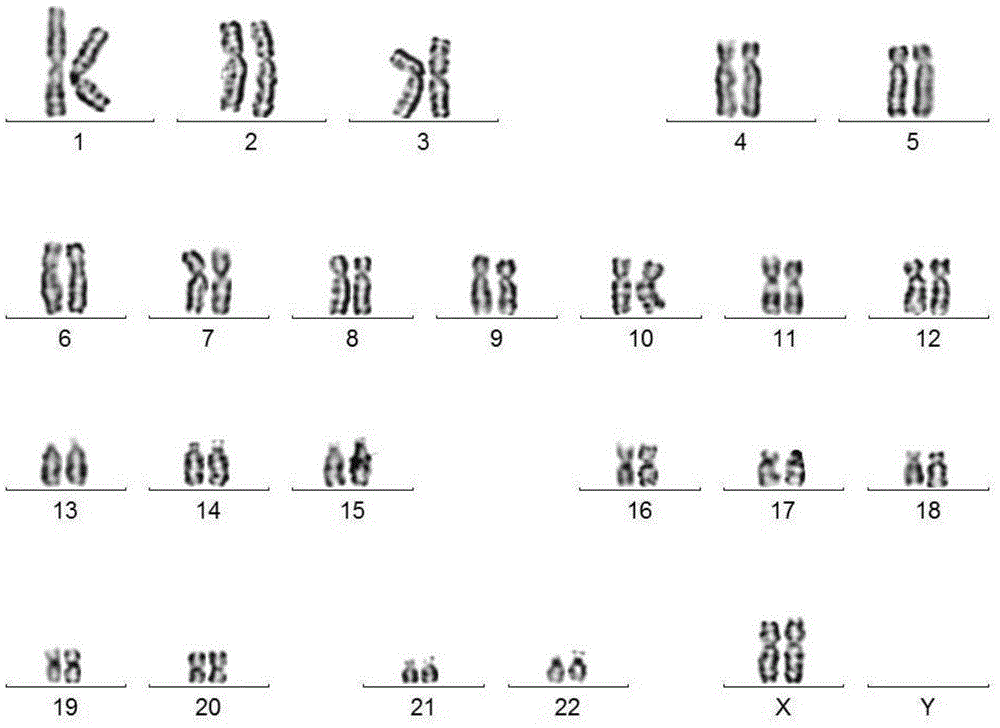Low-density-tolerant feeder-layer-free human pluripotency stem cell culture medium
A human pluripotent stem cell, feeder-free technology, applied in the field of feeder-free human pluripotent stem cell culture medium, can solve the problems of complex composition, high concentration of cytokines, poor use effect, etc.
- Summary
- Abstract
- Description
- Claims
- Application Information
AI Technical Summary
Problems solved by technology
Method used
Image
Examples
Embodiment 1
[0077] Example 1 (BioC Ⅰ)
[0078] One of the schemes of the feeder-free human pluripotent stem cell culture medium provided by the present invention, the formula of each culture medium is shown in Table 1. The survival rate of single-cell human iPSCs in each medium was detected by MTT method and AP method.
[0079] After culturing human iPSCs for 50 passages using the following groups of media, the karyotype identification and flow cytometry detection of pluripotency markers were performed on human iPSCs. The test results of the fourth group of media are as follows: figure 1 and figure 2 shown.
[0080] Table 1 No feeder layer human pluripotent stem cell culture medium formula
[0081]
[0082]
[0083] The above experimental data show that adding sodium heparin to the culture medium can promote the proliferation rate and single cell survival rate of human iPSCs (including ESCs and iPSCs).
Embodiment 2
[0084] Example 2 (BioC II)
[0085] One of the schemes of the feeder-free human pluripotent stem cell culture medium provided by the present invention, the formula of each culture medium is shown in Table 2. The survival rate of single-cell human iPSCs in each medium was detected by MTT method and AP method.
[0086] After culturing human iPSCs for 50 passages using the following groups of media, the human iPSCs were identified by karyotype and flow cytometric detection of pluripotency markers. The detection results of the fourth group of media are as follows: image 3 and Figure 4 shown.
[0087] Table 2 No feeder layer human pluripotent stem cell culture medium formula
[0088]
[0089]
[0090] The above experimental data show that adding lithium heparin to the culture medium can promote the proliferation rate and single cell survival rate of human iPSCs (including ESCs and iPSCs).
Embodiment 3
[0091] Embodiment 3 (BIOC Ⅰ / BIOC Ⅱ)
[0092] One of the schemes of the feeder-free human pluripotent stem cell culture medium provided by the present invention, the formula of each culture medium is shown in Table 3. The survival rate of single-cell human iPSCs in each medium was detected by MTT method and AP method.
[0093] Table 3 feeder-free human pluripotent stem cell culture medium formula
[0094]
[0095]
[0096] The above experimental data show that the combined use of sodium heparin and lithium heparin can also promote the proliferation rate and single cell survival rate of human iPSCs (including ESCs and iPSCs).
PUM
 Login to View More
Login to View More Abstract
Description
Claims
Application Information
 Login to View More
Login to View More - R&D Engineer
- R&D Manager
- IP Professional
- Industry Leading Data Capabilities
- Powerful AI technology
- Patent DNA Extraction
Browse by: Latest US Patents, China's latest patents, Technical Efficacy Thesaurus, Application Domain, Technology Topic, Popular Technical Reports.
© 2024 PatSnap. All rights reserved.Legal|Privacy policy|Modern Slavery Act Transparency Statement|Sitemap|About US| Contact US: help@patsnap.com










